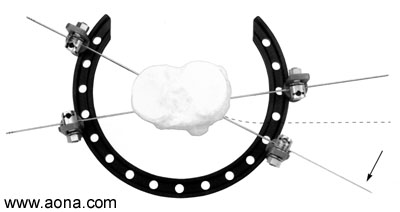
Close up of "olive" wire
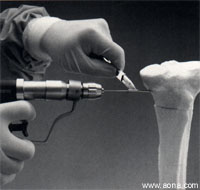 Make a stab incision and insert a Split Tissue Protection Sleeve through the soft tissue to the bone.
Make a stab incision and insert a Split Tissue Protection Sleeve through the soft tissue to the bone.
Manually push the wire through the sleeve until it contacts the bone.
Alternatively, push the point of the wire through the skin without making an incision. To avoid pressure on the skin, do not change wire direction after insertion. If necessary, hack wire out to redirect it.
Using the ComPact Air Drive, insert the wire into the bone. Monitor wire placement and direction with fluoroscopy.

When the wire has pierced the opposite cortex, remove the air drive and advance the wire through the soft tissues using gentle blows of the hammer, until equal amounts of wire protrude from both sides.
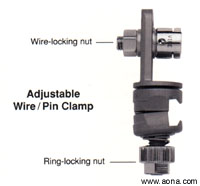
Choose a ring of adequate size -- at least two finger-breadths between ring and soft tissue. A 3/4 ring will allow clearance for knee flexion.
Open the ring-locking nuts and wirelocking nuts fully on two Adjustable Wire/Pin Clamps. Note: These nuts can only be loosened, not removed.
Slide a clamp over each end of the wire by inserting the wire into the hole marked "wire" (the larger hole accepts Schanz screws).
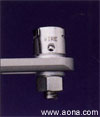
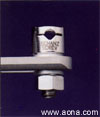
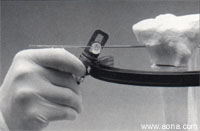
Hook the upper jaw of the clamp on the ring, pull on the lower jaw to separate the jaws, and snap it onto the ring.
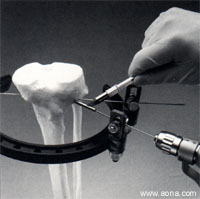
Wires can be inserted at any time, using a clamp as an aiming guide.
Place a clamp on the ring. Insert the wire through the clamp and protection sleeve and advance it through the bone. Open and remove the protection sleeve. Slide a clamp over the other end of the wire, and clamp it to the ring.
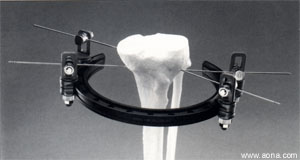
Note: Additional wires may be inserted at the surgeon's discretion.
All wires should be inserted before tensioning.

To minimize soft tissue irritation, it is important to eliminate any bowing in the wires.
Adjust wire position within the clamp and finger-tighten wire-locking nuts.
Adjust clamp location on the ring to straighten wire and wrench-tighten the ring-locking nuts to lock the clamps to the ring.
